Plant hunting with Crûg Farm Plants
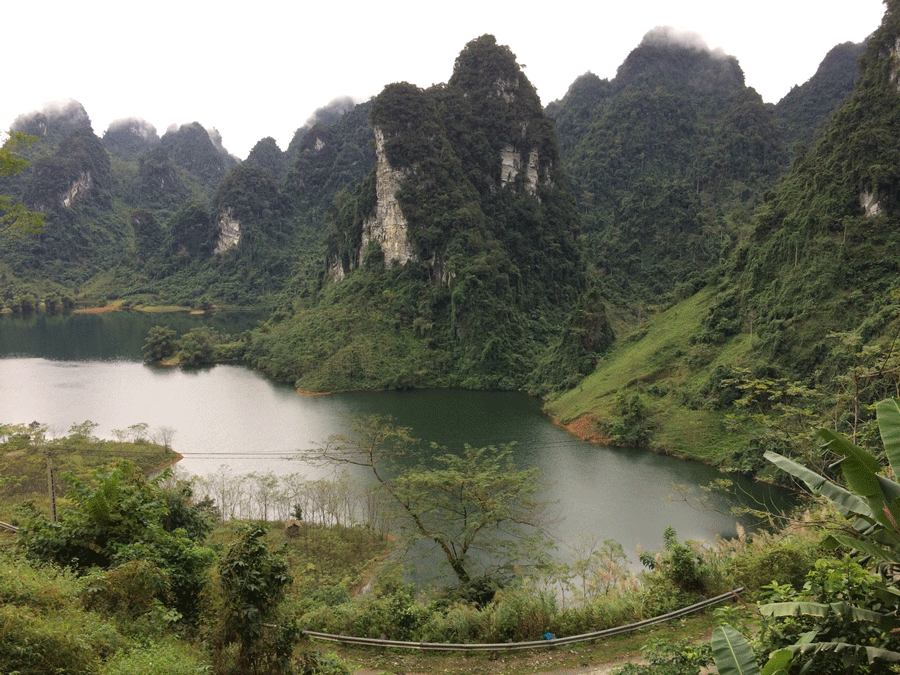 Sandy Felton talks to Bleddyn and Sue Wynn-Jones of Crûg Farm Plants and discovers how the aim to extend their plant list with plants worthy of cultivation, led them to becoming two of the world’s modern-day plant hunters.
Sandy Felton talks to Bleddyn and Sue Wynn-Jones of Crûg Farm Plants and discovers how the aim to extend their plant list with plants worthy of cultivation, led them to becoming two of the world’s modern-day plant hunters.
In his book ‘Modern Plant Hunters‘, Dr Sandy Primrose comments that, ‘Bleddyn and Sue Wynn-Jones are so dedicated and successful as collectors that they rival any of the heroic names from the golden era of plant hunting.’
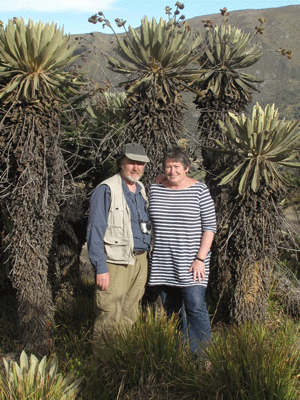 This is a very fitting description for two people (Sue & Bleddyn pictured left in northern Colombia, in 2015) who have become renowned in the horticultural world. Indeed, their nursery, Crûg Farm Plants, situated just outside Caernarfon, has become a Mecca for extraordinary plants where the emphasis is on introducing new and wondrous plants from their assorted sorties to remote corners of the globe.
This is a very fitting description for two people (Sue & Bleddyn pictured left in northern Colombia, in 2015) who have become renowned in the horticultural world. Indeed, their nursery, Crûg Farm Plants, situated just outside Caernarfon, has become a Mecca for extraordinary plants where the emphasis is on introducing new and wondrous plants from their assorted sorties to remote corners of the globe.
The motivation behind their plant hunting stems from the fact that when they opened their nursery part-time in the early 90s, they saw the need to extend their plant list: “We were aware that there were a lot of plants worthy of cultivation which were not in cultivation,” explains Sue. “For example, six different species of hydrangeas in Taiwan. We were used to going backpacking and enjoyed a sense of adventure, so it seemed the obvious way to go,” she adds.
The rest is history – their first expedition was to Jordan was in 1991 and since then they have visited a dazzling array of countries including Vietnam, Taiwan, Sri Lanka, Korea, Thailand, Costa Rica, Japan, Sikkim and Guatemala, to name a few. Visitors to their website – www.crug-farm.co.uk – can find a full list of their expeditions as well as lots of interesting tales of adventure and discovery along the way. Many have come to know them through their Chelsea exhibits, others have made the pilgrimage to their North Wales nursery, many more delight in their online catalogue to find something special.
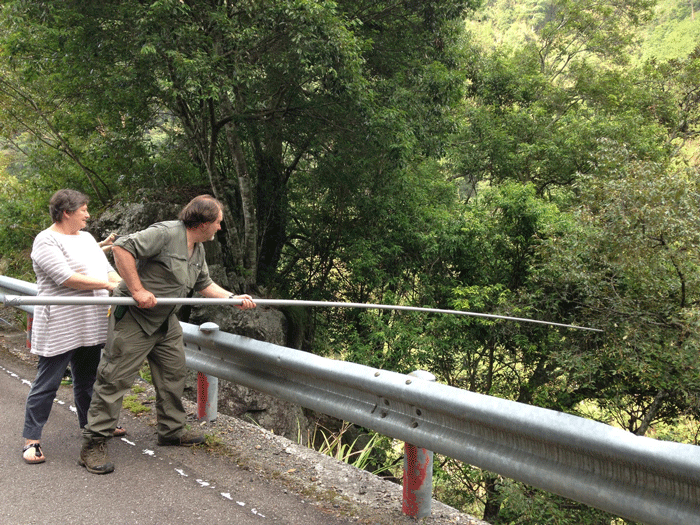 They have risked life and limb through earthquakes, local uprisings and typhoons to bring thousands of new species and cultivars to the UK. The picture above shows Bleddyn using a telescopic fishing rod to collect seed of Acer albopurpurascens on an expedition with the Taiwanese Museum of Natural Science Taichung. Sue is hanging onto Bleddyn’s belt in case he fell over the barrier, as there was a long drop! Just one of the challenges of seed collecting.
They have risked life and limb through earthquakes, local uprisings and typhoons to bring thousands of new species and cultivars to the UK. The picture above shows Bleddyn using a telescopic fishing rod to collect seed of Acer albopurpurascens on an expedition with the Taiwanese Museum of Natural Science Taichung. Sue is hanging onto Bleddyn’s belt in case he fell over the barrier, as there was a long drop! Just one of the challenges of seed collecting.
When top garden designers want something exotic and special their first port of call is likely to be Bleddyn and Sue. Over the years they have comfortably settled into a division of labour with both going out on collecting forays while Sue often has to remain at base looking after the job of cleaning and packaging all the seed.
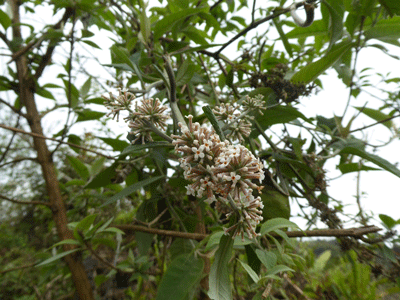 Bleddyn and Sue are believed to be the only plant collectors in England and Wales, apart from Kew, to hold an ongoing collecting licence in accord with the Convention on Biological Diversity. Indeed, they will tell you that their primary goal in collecting and growing wild plants from seed at Crûg Farm Plants, is the ex-situ conservation of the diversity within the plants that they are capable of growing.
Bleddyn and Sue are believed to be the only plant collectors in England and Wales, apart from Kew, to hold an ongoing collecting licence in accord with the Convention on Biological Diversity. Indeed, they will tell you that their primary goal in collecting and growing wild plants from seed at Crûg Farm Plants, is the ex-situ conservation of the diversity within the plants that they are capable of growing.
Their aim is to introduce hitherto new genera, species and varieties that are not to their knowledge in cultivation. Their finds are distributed to safe facilities such as Botanic Gardens and public gardens who have the expertise to grow these collections. (pictured above left: Buddleja paniculata, a winter flowering species that has not been in cultivation in the UK before. Found near Sapa high in the mountains of northern Vietnam.)
The banner picture at the top of the page is of the lake at Na Toong, Northern Vietnam – a centre of diversity for the new species of Aspidistra they were discovering. Here Bleddyn used a boat as the water level is just below the level that Aspidistra starts to appear. He explains that when they first started collecting Aspidistra there were only 20/30 species known and they have just passed the 200 mark this year!
Bleddyn points out that the key consideration on deciding on plant hunting expeditions is to find plants that are not in cultivation that will also have a good probability of being capable of growing in the UK. Ask them what they consider their most memorable find and he will tell you that there have been so many over 30 years: “Looking for Cardiandra in Taiwan, which we put a lot of effort into is probably one of the most memorable. We were given special permission to go to phoenix Mountain, which is an experimental forest,” he says.
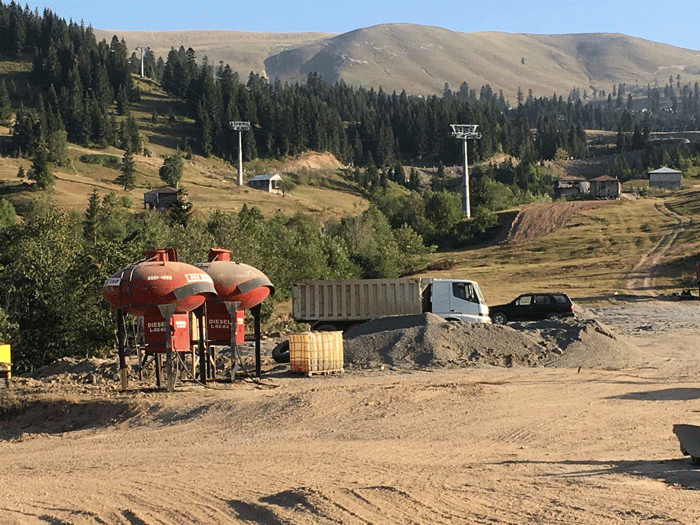 They have certainly encounted many unusual locations in their expeditions such as the one pictured above – a ski resort 2,000m altitude being one. Here they were on a joint expedition in Georgia with Moscow Botanic Garden looking for Ruscus colchicus (pictured below right) which is considered to be coastal! They were directed by the local Botanic Gardens that the bulldozers were about to bury a large colony to make way for the ski resort!
They have certainly encounted many unusual locations in their expeditions such as the one pictured above – a ski resort 2,000m altitude being one. Here they were on a joint expedition in Georgia with Moscow Botanic Garden looking for Ruscus colchicus (pictured below right) which is considered to be coastal! They were directed by the local Botanic Gardens that the bulldozers were about to bury a large colony to make way for the ski resort!
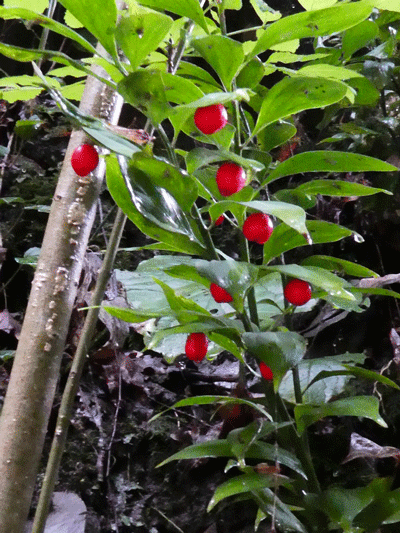 Their expeditions have been so numerous that it is perhaps facile to ask them which part of the world they most enjoy visiting: “Difficult to select one country as we have enjoyed them all,” says Sue. “We are currently working with Botanical Institutes from Russia and some of the surrounding countries who are keen to co-operate. Meeting the people from the different countries has also been a wonderful education and humbling.”
Their expeditions have been so numerous that it is perhaps facile to ask them which part of the world they most enjoy visiting: “Difficult to select one country as we have enjoyed them all,” says Sue. “We are currently working with Botanical Institutes from Russia and some of the surrounding countries who are keen to co-operate. Meeting the people from the different countries has also been a wonderful education and humbling.”
Many of their expeditions have been undertaken with the American plant hunter, Dan Hinkley. Dan, also committed to sustainable horticultural practices, raises awareness of the diversity of plant life and is noted for his outstanding contribution to advancing the science and practice of horticulture.
Bringing new and interesting plants into cultivation, especially ones that are endangered by climate change and deforestation, is their constant focus. With this in mind they have encouraged the ‘Young Propagators Society’, formed with three intentions – the dissemination of propagation knowledge through the generations; encouraging more young horticulturists into propagation and nursery related roles and to inspire learning of all areas of the natural world.
“We hope that the Society will encourage young propagators to learn how to multiply these treasures, which hopefully can be reintroduced in the future once these keen young propagators have multiplied them enough. With the dangers of climate change and deforestation, which is happening at an alarming rate, we felt it was important to have a Society such as the Young Propagators to learn how to do this work,” explained Sue.
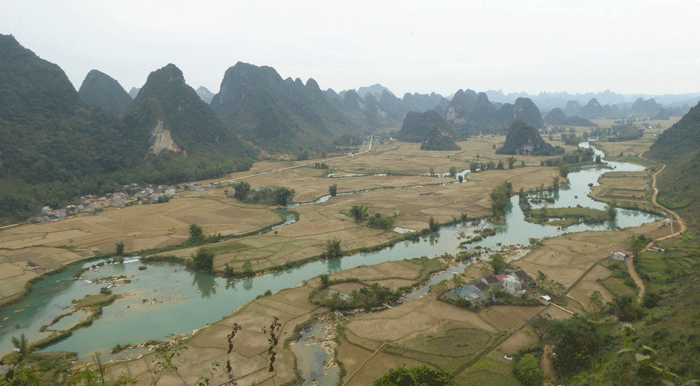 (above: Limestone karst Vietnam)
(above: Limestone karst Vietnam)
They are aware that with climate change and globalisation, the future of plant hunting is facing many challenges: “The negatives are that plants are getting wiped out at an alarming speed,” says Bleddyn. “Man is going at such a speed that it is impossible to keep up with saving the plants that are being destroyed and lost for ever. That is speaking from first-hand experience. Regarding globalisation, we feel extremely uncomfortable with the over commercialisation and exploitation of sensitive areas,” he adds.
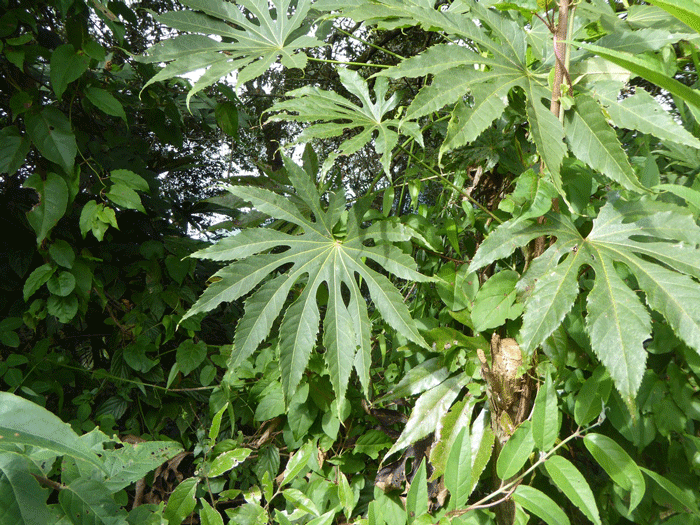 (pictured above: Fatsia polycarpa, endemic to the mountain forests of Taiwan.)
(pictured above: Fatsia polycarpa, endemic to the mountain forests of Taiwan.)
The current pandemic has caused severe problems for nurseries and growers throughout the UK and with the onset of Covid19, Crûg Farm Plants, took the early decision just before lockdown that they would not stock their sales area which they were due to open for the season on 4th April 2020: “With our main business being mail order we hoped that we would be able to carry on,” says Bleddyn. “We were able to comply with all the government guidelines with regards to social distancing for staff etc, however, since the situation has eased we have decided to remain closed for the rest of this season because of our ages.”
The tales of their expeditions and exploits are many and varied and would fill a book in their own right. However, we owe a large debt to people like Sue and Bleddyn, whose conservation ethics are helping us preserve and propagate new and important plants, that in this over commercialised world are sadly in danger of disappearing for ever.
Visit their website at https://www.crug-farm.co.uk to discover the amazing variety of plants they stock, learn more about their plant hunting adventures and discover for yourself something of their amazing world and dedication to saving some of our most precious plant species.
Picture credits: All pictures are strictly ©Crûg Farm Plants, reproduced with kind permission.

